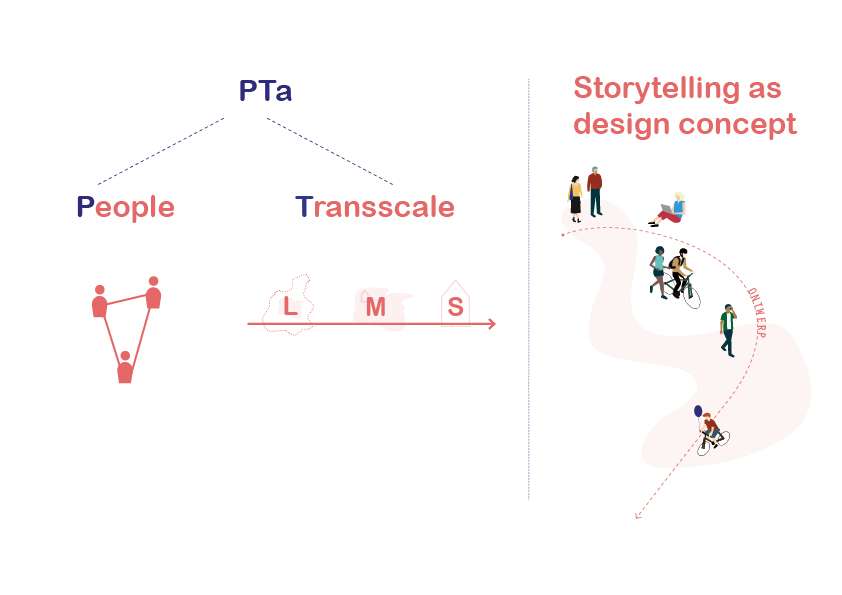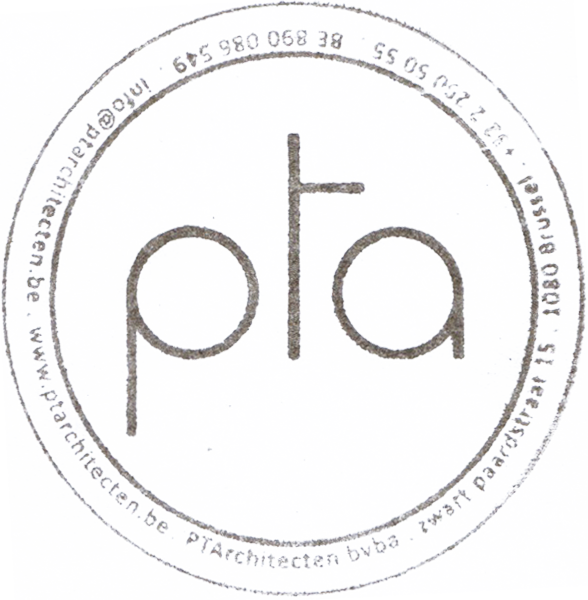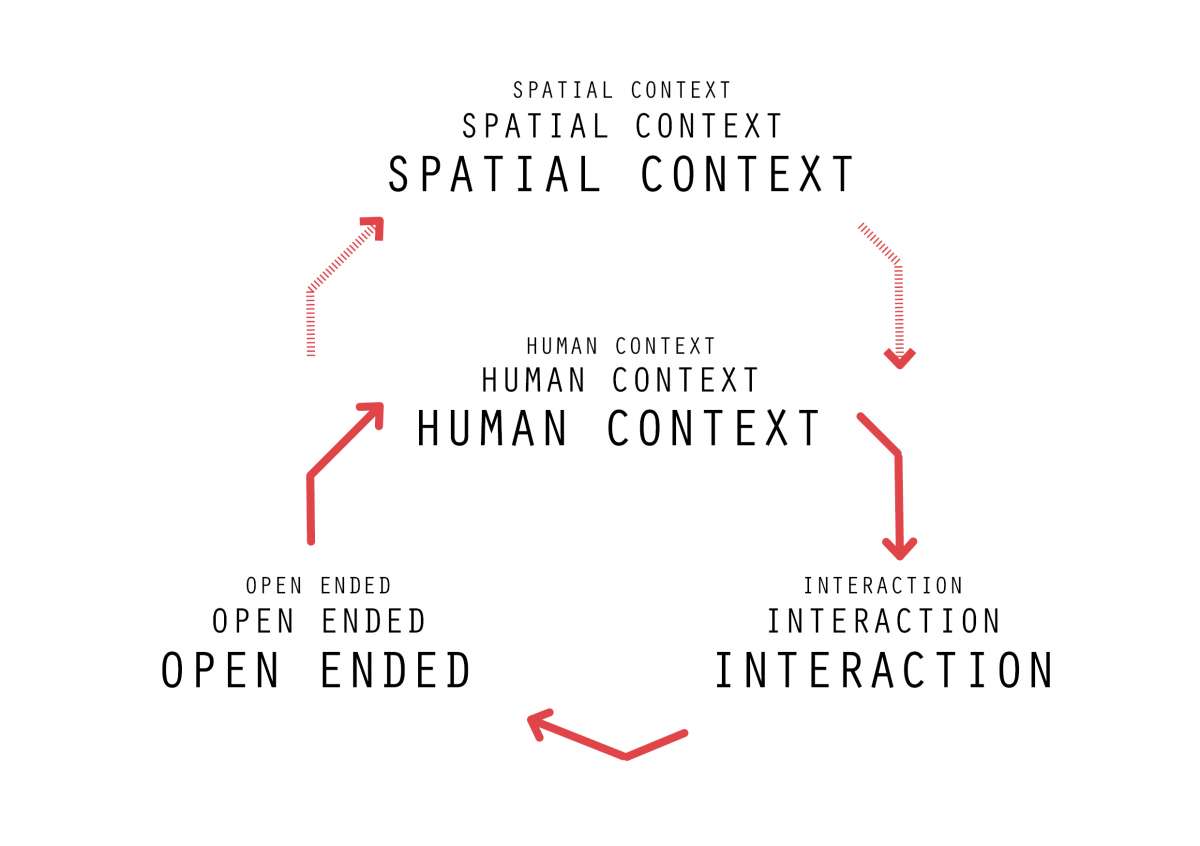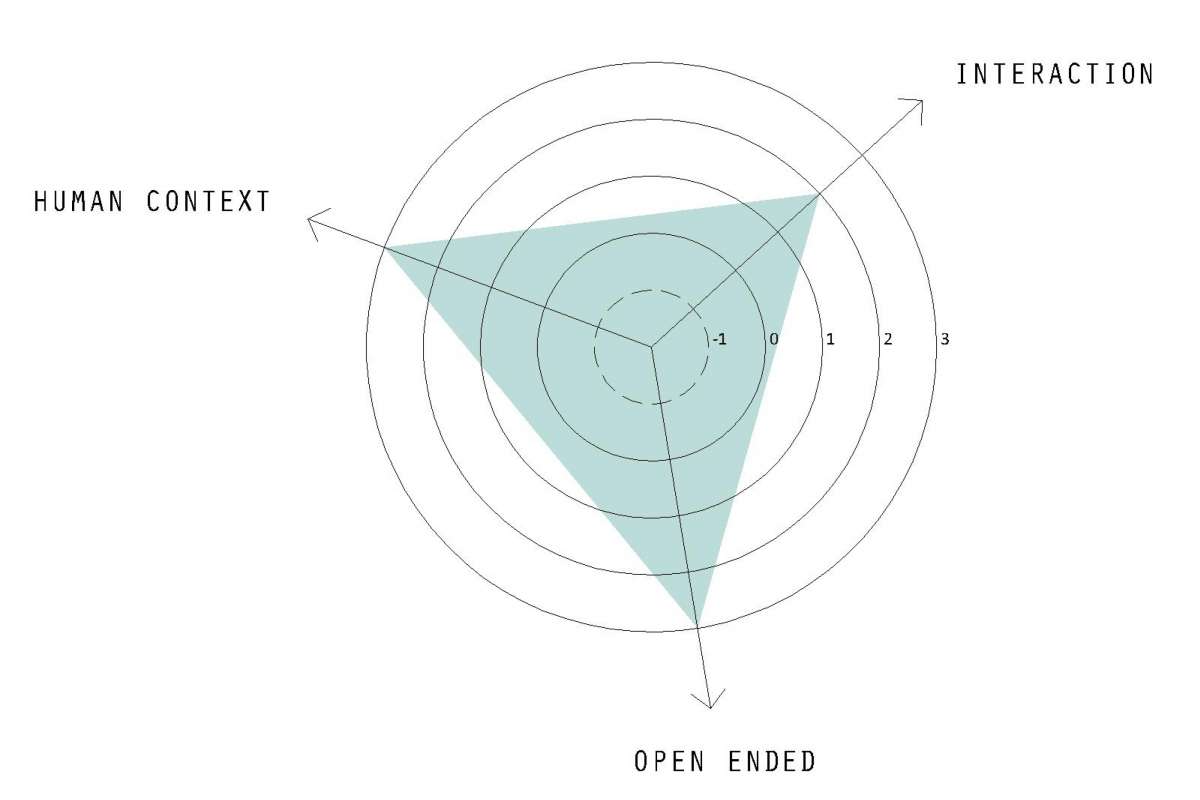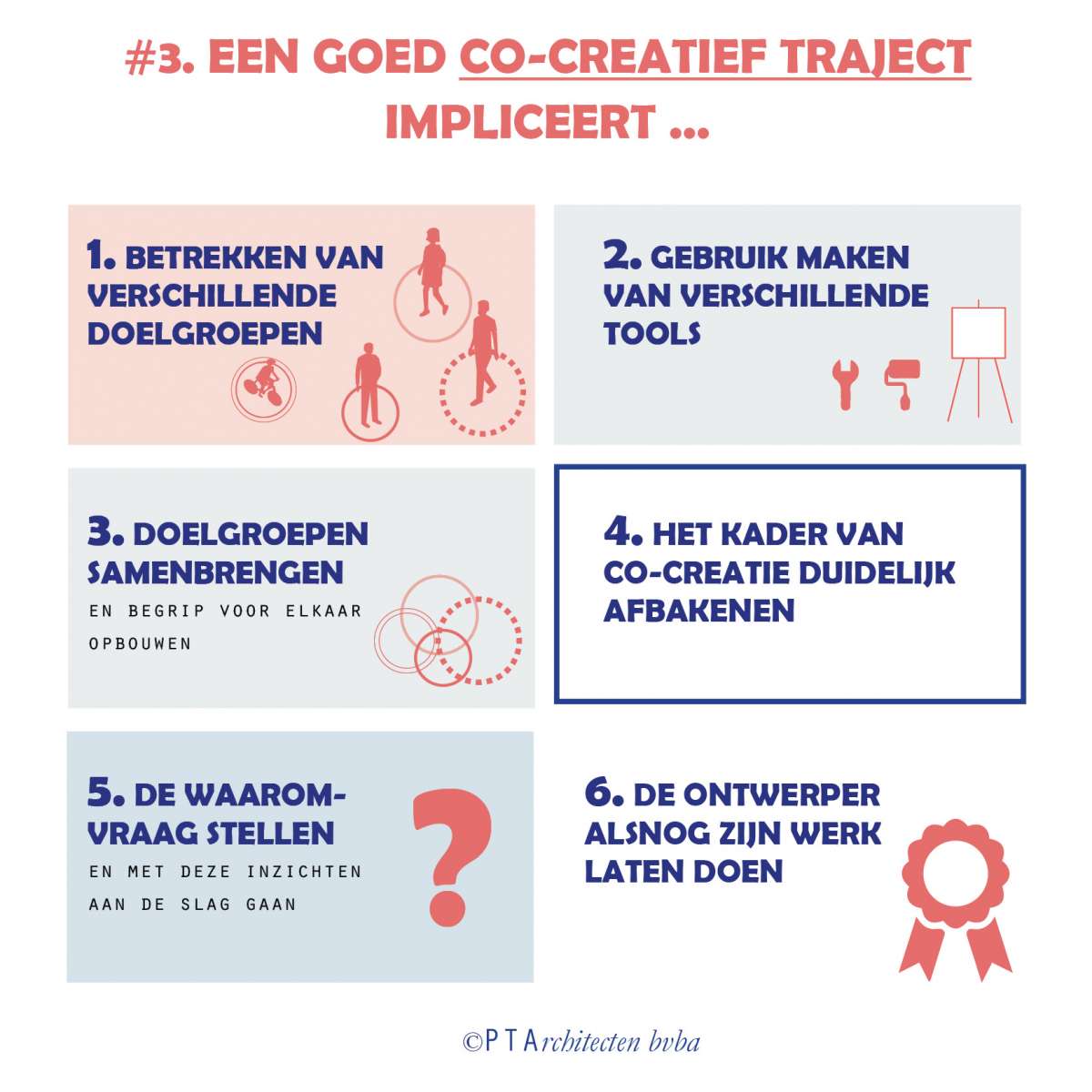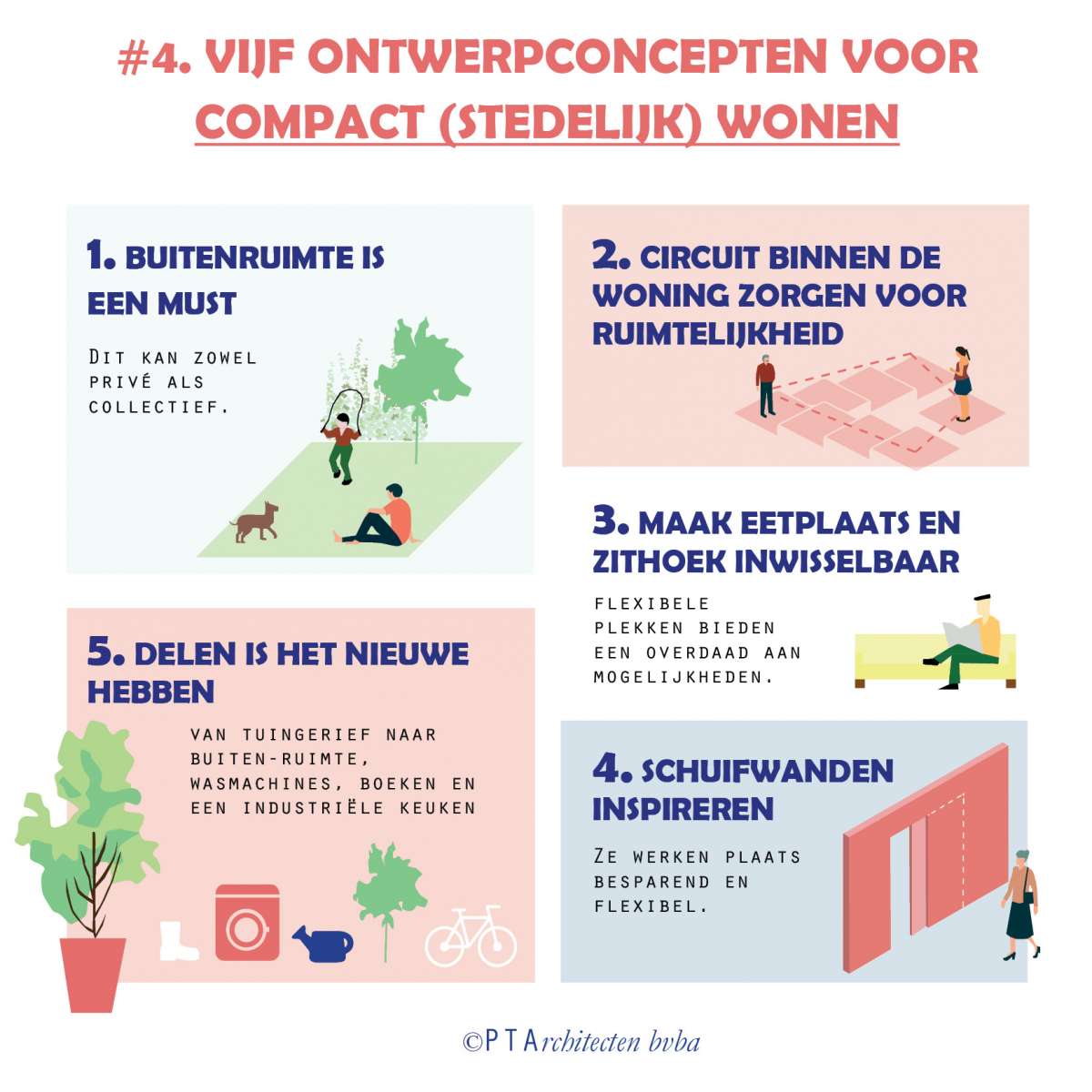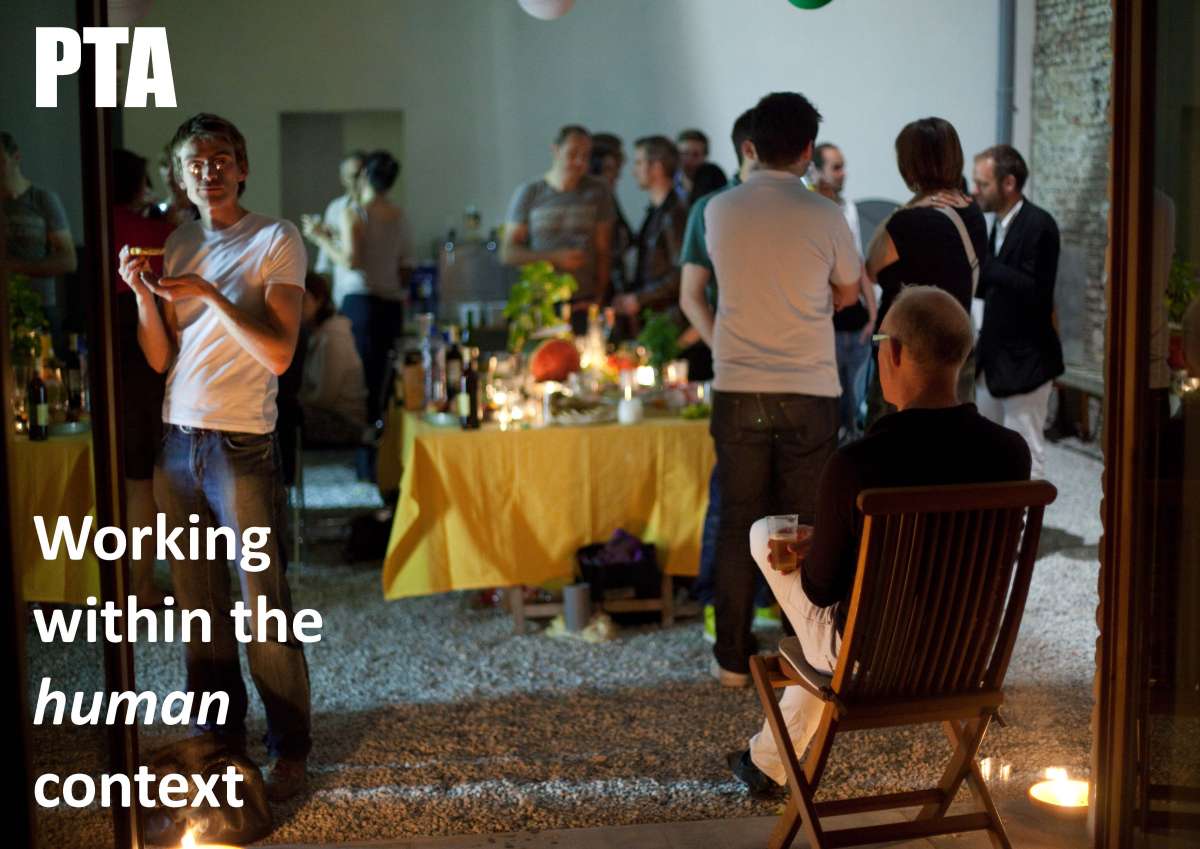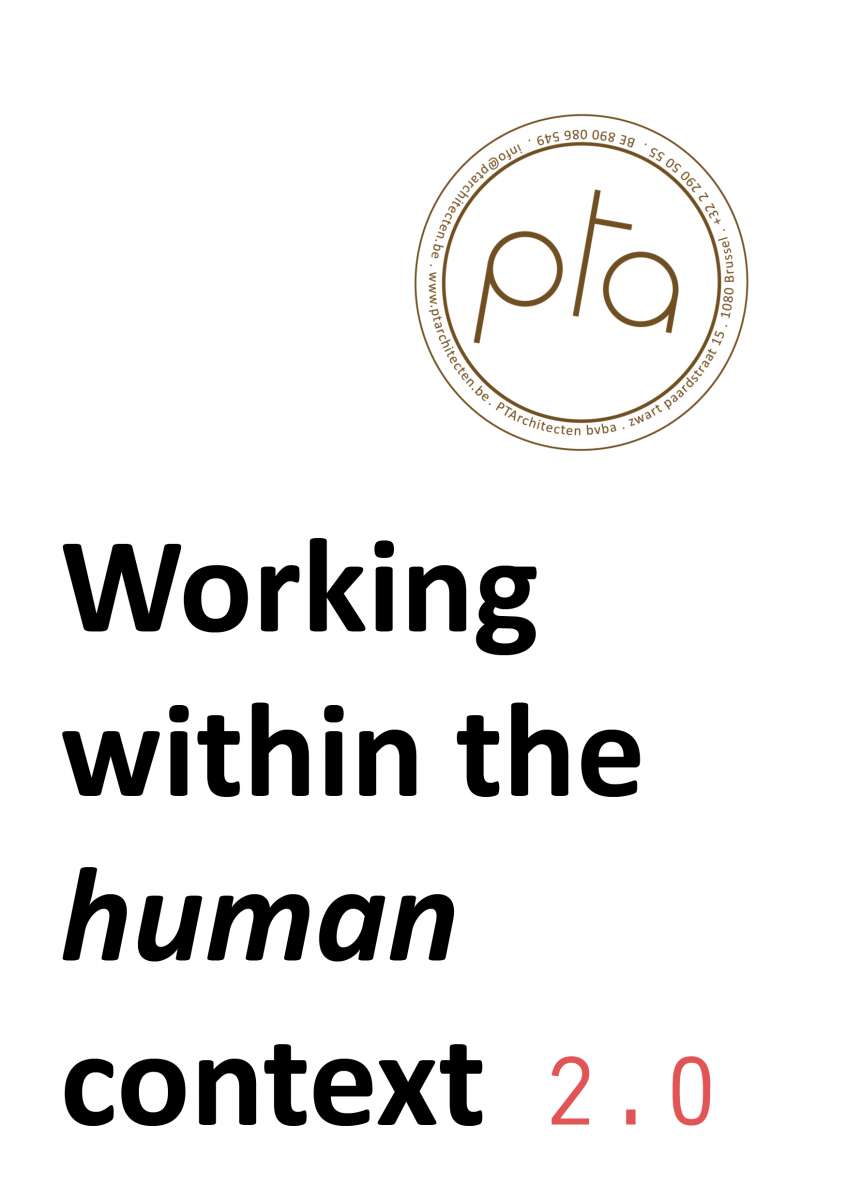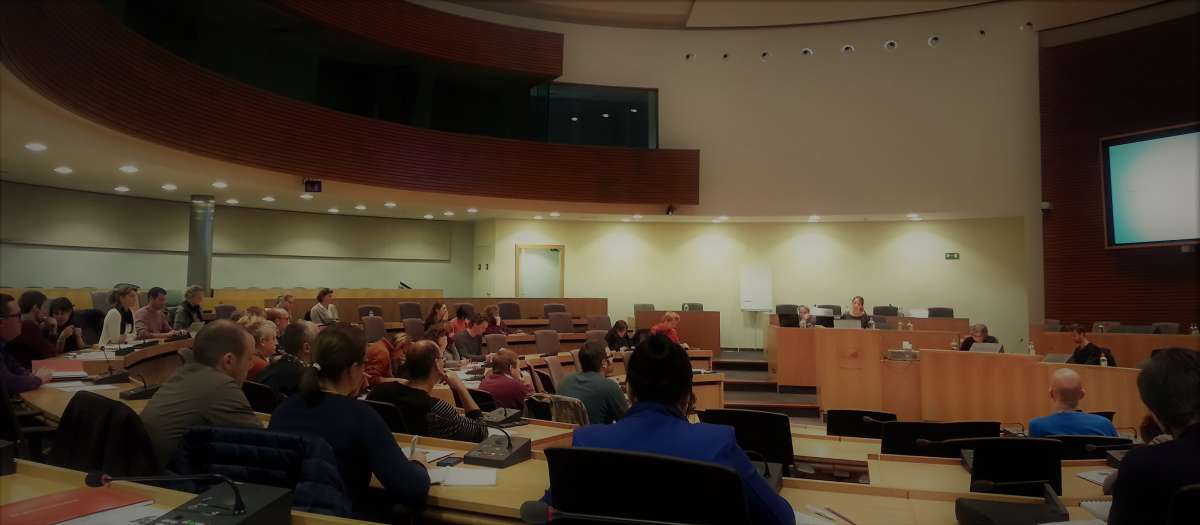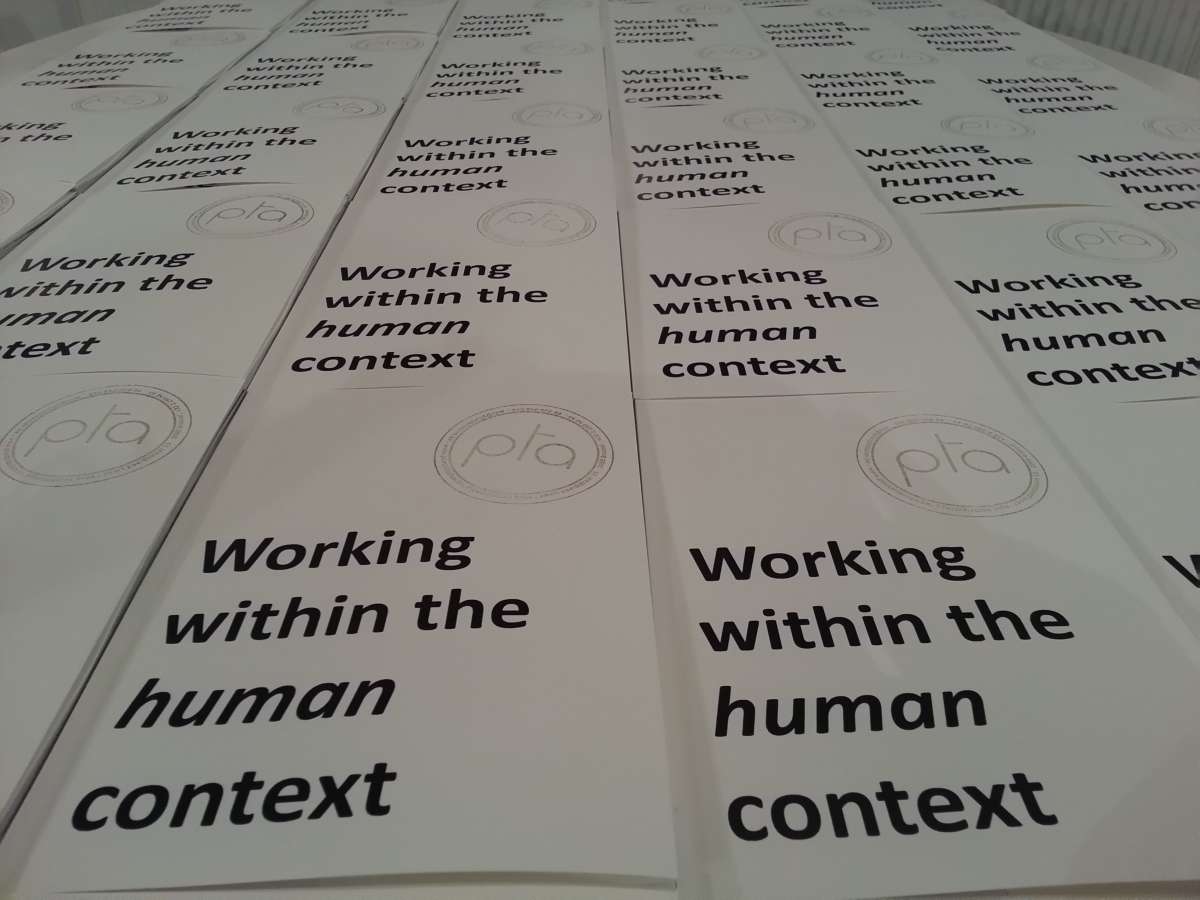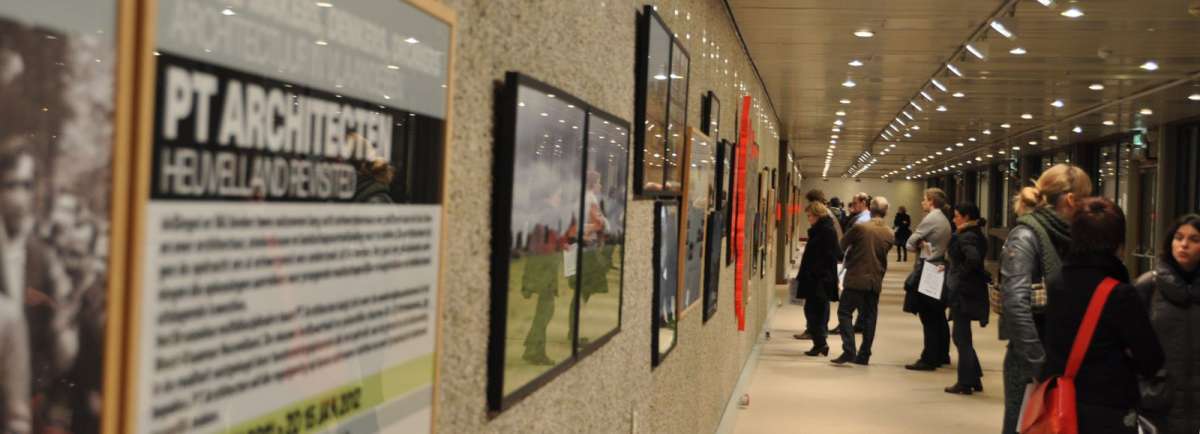PTA bestaat uit een team van geëngageerde ontwerpers. We werken volgens twee principes: People en Transscale.
People
We zijn een multidisciplinair team en vullen elkaar perfect aan. Zo garanderen we een persoonlijke aanpak waarbij voor ieder project wordt gewerkt met een ‘triangel’ van 3 personen uit het team. Joie de vivre wordt niet enkel geambieerd in de bureausfeer maar eveneens ingezet voor de toekomstige gebruikers van elk project. Zo staat de gebruiker centraal en wordt een hoge belevingskwaliteit beoogd. Dit zorgt ervoor dat we van working within the human context onze specialiteit maakten. Om finaal aan de human context bij te dragen moeten we ervan vertrekken. Er wordt gewerkt met gebruikersprofielen doorheen het volledige ontwerpproces. Zo zijn we ontwerpers met oog voor verbeelding in de ontwerpfase, en wordt er ingezet op beleving na uitvoering. Via het narratief van de gebruiker worden de noden tastbaar gemaakt en worden zelf de meest onderbelichte of kwetsbare doelgroepen gehoord. Zo komen we tot het Storytelling as a design concept, onze handtekening bij iedere opdracht.
Transscale
Als multidisciplinair team werken we graag op verschillende schaalniveaus van strategische planning, over architectuurontwerp tot werfopvolging. Onze focus ligt op projecten die door de verschillende schalen heen werken. We zetten in op het raakvlak tussen schalen en disciplines omdat de potenties die volgen uit de interactie tussen deze domeinen, volgens ons, vaak onderbenut worden. Naast de schaal van de eigenlijke opdracht, maken we de koppeling naar andere schalen. Er wordt uitgezoomd naar een bredere context en ingezoomd op strategische punten. Met de nodige realiteitszin starten we ieder project met het opschalen van ambities. De basis ligt bij het verbeelden van de noden van de gebruiker via een narratief. Zo wordt het Storytelling as a design concept op iedere schaal doorgevoerd. Door de kracht van verbeelding creëren we draagvlak voor het ontwerpverhaal. Dit verhaal heeft duurzaamheid als basishouding en we deinzen niet terug om een standpunt in te nemen en uit te dragen. Zo gaan we steeds op zoek naar projecten die ertoe doen.
